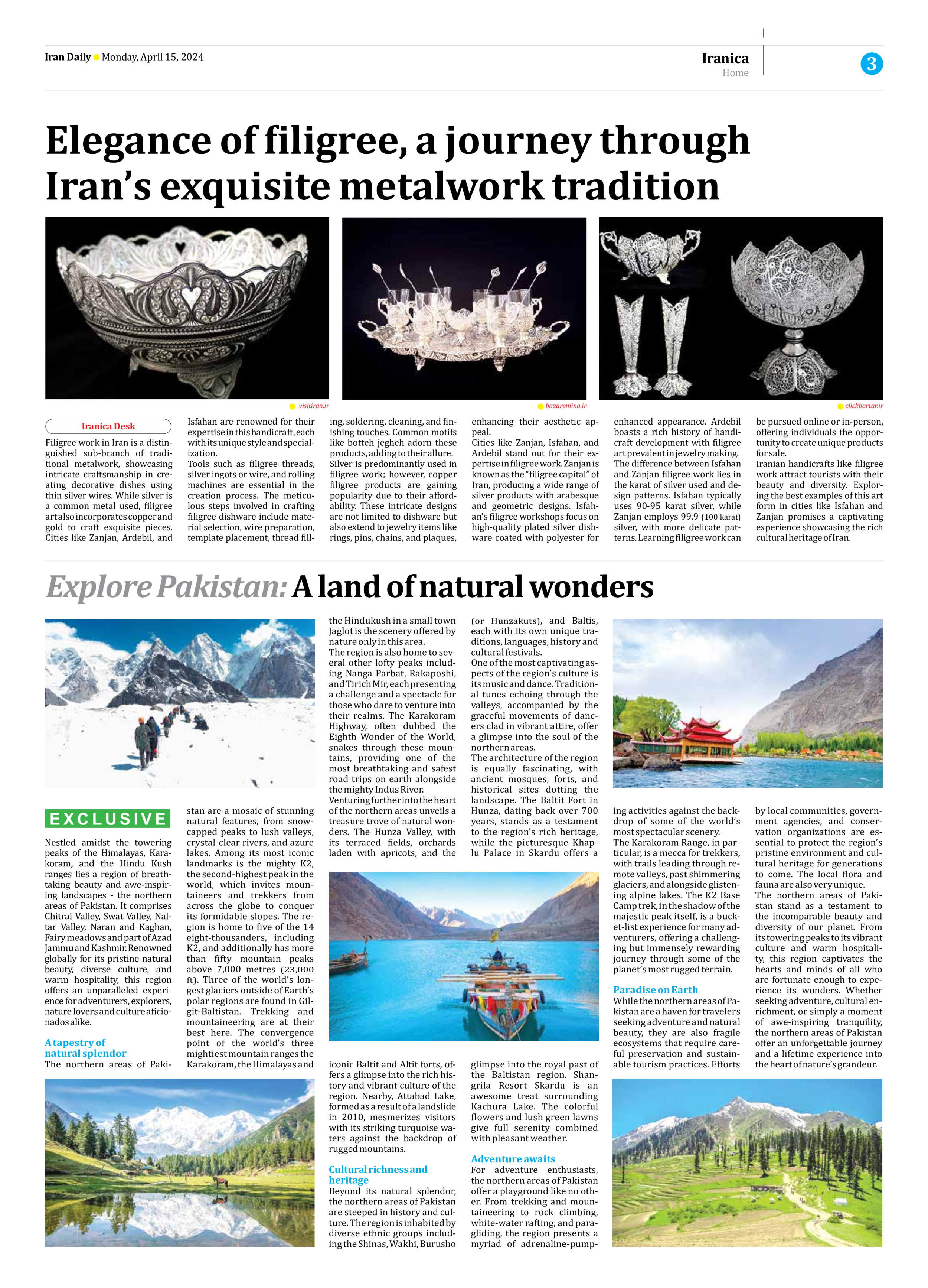
Elegance of filigree, a journey through Iran’s exquisite metalwork tradition
Filigree work in Iran is a distinguished sub-branch of traditional metalwork, showcasing intricate craftsmanship in creating decorative dishes using thin silver wires. While silver is a common metal used, filigree art also incorporates copper and gold to craft exquisite pieces. Cities like Zanjan, Ardebil, and Isfahan are renowned for their expertise in this handicraft, each with its unique style and specialization.
Tools such as filigree threads, silver ingots or wire, and rolling machines are essential in the creation process. The meticulous steps involved in crafting filigree dishware include material selection, wire preparation, template placement, thread filling, soldering, cleaning, and finishing touches. Common motifs like botteh jegheh adorn these products, adding to their allure.
Silver is predominantly used in filigree work; however, copper filigree products are gaining popularity due to their affordability. These intricate designs are not limited to dishware but also extend to jewelry items like rings, pins, chains, and plaques, enhancing their aesthetic appeal.
Cities like Zanjan, Isfahan, and Ardebil stand out for their expertise in filigree work. Zanjan is known as the “filigree capital” of Iran, producing a wide range of silver products with arabesque and geometric designs. Isfahan’s filigree workshops focus on high-quality plated silver dishware coated with polyester for enhanced appearance. Ardebil boasts a rich history of handicraft development with filigree art prevalent in jewelry making.
The difference between Isfahan and Zanjan filigree work lies in the karat of silver used and design patterns. Isfahan typically uses 90-95 karat silver, while Zanjan employs 99.9 (100 karat) silver, with more delicate patterns. Learning filigree work can be pursued online or in-person, offering individuals the opportunity to create unique products for sale.
Iranian handicrafts like filigree work attract tourists with their beauty and diversity. Exploring the best examples of this art form in cities like Isfahan and Zanjan promises a captivating experience showcasing the rich cultural heritage of Iran.







